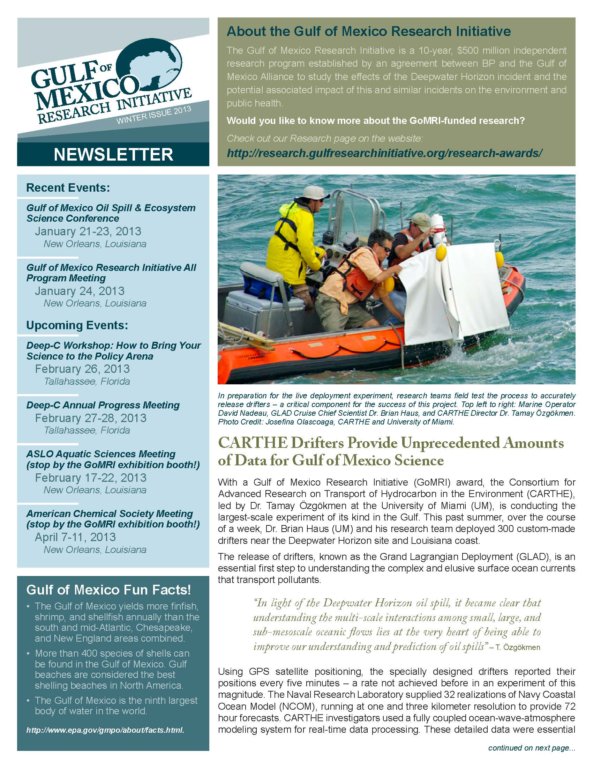GoMRI Newsletter: Winter Issue 2013
Download Full Issue (PDF)
Above the Fold
– “CARTHE Drifters Provide Unprecedented Amounts of Data for Gulf of Mexico Science”
– Frequently Asked Questions by Dr. Chuck Wilson
– Note from the Research Board Chair
– Education Corner
– Seven Questions with Dr. Steve Murawski
Community Happenings
Science Corner
Published Science Highlights from the GoMRI Program
Radiocarbon evidence that carbon from the Deepwater Horizon spill entered the planktonic food web of the Gulf of Mexico
J P Chanton et al 2012 Environ. Res. Lett. 7 045303
The study reports that the distinct radiocarbon isotopic composition of Macondo oil provided a sensitive tracer to estimate petro-carbon contributions from the Deepwater Horizon spill to the planktonic food web.
Oil weathering after the Deepwater Horizon disaster led to the formation of oxygenated residues
Aeppli et al Environ. Sci. Technol., 2012, 46 (16), pp 8799–8807
The authors identify a compound of oxygen combined with oil hydrocarbons (oxyhydrocarbons) which make up a significant amount of the chemical composition of weathered oil. This finding expands the analytical window, or the range of compounds, that scientists can study in determining the fate and effect of petroleum hydrocarbons after an oil spill.
Video Clip of the Quarter
Each quarter, we will post a “Video Clip of the Quarter.” This quarter’s clip, while not technically a video, shows hundreds of data-collecting ocean drifters that are “going with the flow” in the Gulf of Mexico as part of the CARTHE project featured in this issue of the newsletter. Dr. Bruce Lipphardt, with the CARTHE project team at the University of Delaware, generates and updates this animation regularly.
https://gulfresearchinitiative.org/follow-the-journey-of-carthe-drifters-in-the-gulf/

